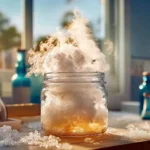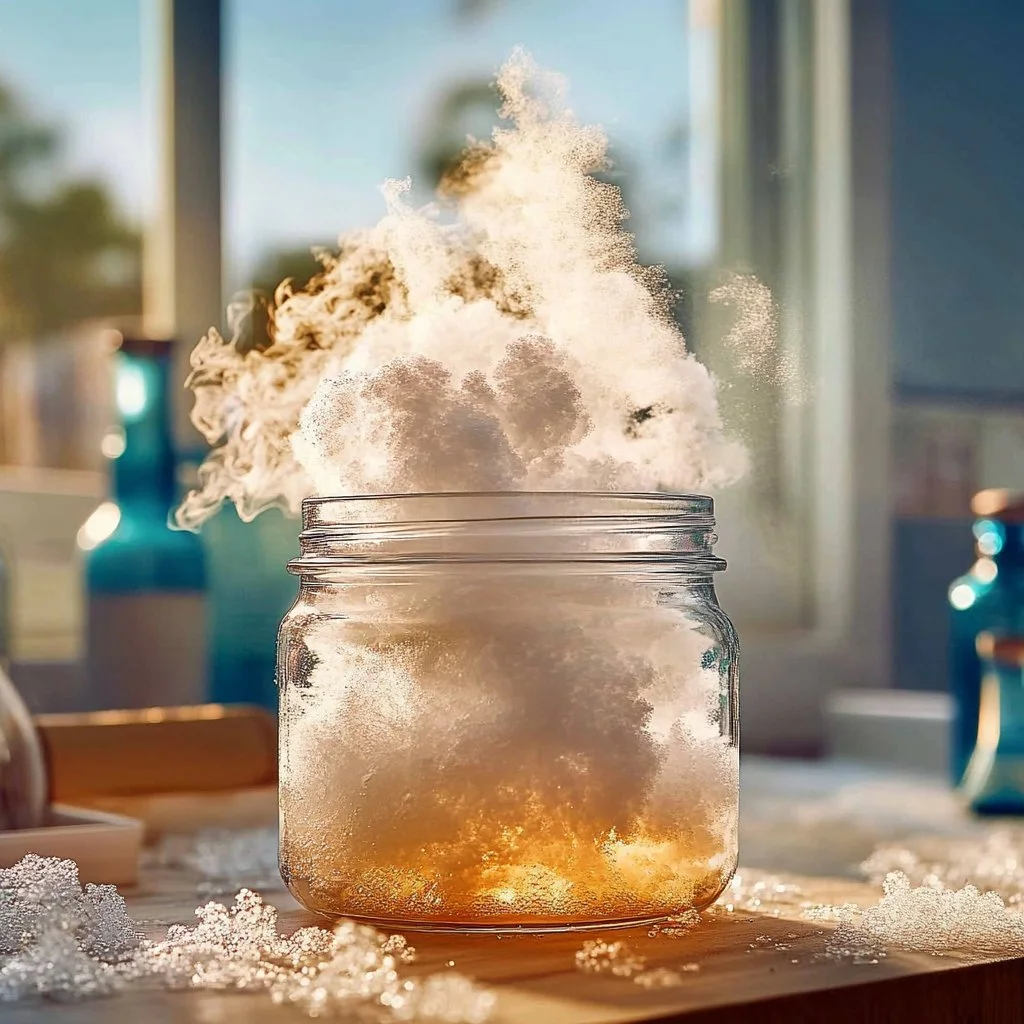Introduction
Are you ready to unleash your inner scientist while having a blast? Creating hot ice with baking soda and vinegar is a fun and educational experience suitable for all ages. This fascinating science experiment not only allows you to explore basic chemical reactions but also results in a visually appealing product that resembles ice or crystalline structures. It’s perfect for school projects, family activities, or simply a delightful afternoon at home. By combining the fizzy reaction of vinegar and baking soda, you’ll discover the nature of exothermic reactions and see firsthand how they generate heat. Get your materials ready and dive into this easy yet captivating craft recipe!
Why You’ll Love This Hot Ice with Baking Soda and Vinegar:
- Interactive Learning: A great way for kids to experience hands-on science.
- Easy to Make: Requires common household ingredients.
- Visual Appeal: Creates stunning crystalline structures that are fun to observe.
- Safe and Non-toxic: Perfect for all age groups.
- Great for Playing: Can be used for creative play or educational demonstrations.
Materials:
- 1 cup baking soda
- 1 cup vinegar
- A heat-safe container (like a glass jar)
- Food coloring (optional)
- A spoon for mixing
- A pot for heating (if making hot ice)
- Thermometer (optional, for measuring temperature)
Full Step-by-Step:
Step 1: Prepare Your Workspace
- Clear a flat surface and gather all your materials.
- Make sure to wear safety goggles if desired, to protect your eyes from any splashes.
Step 2: Create the Hot Ice Base
- In a heat-safe container, combine 1 cup of baking soda and slowly add 1 cup of vinegar.
- Stir the mixture gently.
- Sensory Cue: Watch as it fizzes and bubbles. This is the initial reaction producing carbon dioxide!
Step 3: Heat the Mixture (if making hot ice)
- Pour the mixture into a pot and gently heat it on low.
- Key Action: Keep stirring to avoid boiling but to allow for evaporation.
- Use a thermometer to monitor the temperature; the solution should be heated until it reaches around 100°C (212°F).
Step 4: Cool the Mixture
- Once the water has mostly evaporated and you are left with a thick solution, remove it from the heat.
- Let it cool slightly—ensure it’s safe to handle.
Step 5: Crystallizing
- Pour the cooled mixture back into the heat-safe container.
- Allow it to sit undisturbed for a few minutes.
- Sensory Cue: Watch as the solution forms beautiful ice-like crystals as it cools down.
Tips & Variations:
- Customize with Colors: Add a few drops of food coloring for a colorful hot ice effect.
- Swap Materials: If you don’t have baking soda, experimenting with other alkaline substances can yield different results.
- Scale It Up or Down: Adjust the quantities based on how much you want to create.
Frequently Asked Questions:
Q1: Can I use apple cider vinegar instead of white vinegar?
A1: Yes, apple cider vinegar can work, although it might affect the clarity of the resulting crystals.
Q2: What happens if I add too much baking soda?
A2: It may lead to a less effective reaction and a more difficult crystallization process.
Q3: Is the heat generated safe?
A3: Yes, this is a safe exothermic reaction; however, always monitor the heating process closely.
Q4: How can I store the hot ice?
A4: Store it in a cool, dry place in an airtight container, away from moisture.
Suggestions:
- Try using molds to create unique shapes of hot ice.
- Experiment with different concentrations of vinegar and baking soda for varying results.
- Share your findings or variations with friends to spark scientific discussions!
Final Thoughts
Creating hot ice with baking soda and vinegar is not only a fantastic scientific experiment but also a creative and enjoyable activity for all family members. We would love to see your versions of this recipe—feel free to share your photos or leave a comment with your thoughts and variations below! Happy experimenting!
Print
Hot Ice with Baking Soda and Vinegar
- Total Time: 30 minutes
- Yield: 1 batch 1x
- Diet: Non-Dietary
Description
Create stunning ice-like crystals through an exciting and educational chemical reaction using household ingredients.
Ingredients
- 1 cup baking soda
- 1 cup vinegar
- A heat-safe container (like a glass jar)
- Food coloring (optional)
- A spoon for mixing
- A pot for heating (if making hot ice)
- Thermometer (optional, for measuring temperature)
Instructions
- Prepare your workspace by clearing a flat surface and gathering all materials.
- In a heat-safe container, combine baking soda and slowly add vinegar, stirring gently.
- Pour the mixture into a pot and gently heat it on low, stirring to avoid boiling.
- Once the water has mostly evaporated and a thick solution remains, remove from heat and let it cool slightly.
- Pour the cooled mixture back into the heat-safe container and let it sit undisturbed to form crystals.
Notes
Customize with food coloring for a colorful effect. Adjust quantities based on desired amount. Always monitor heating closely for safety.
- Prep Time: 10 minutes
- Cook Time: 20 minutes
- Category: Science Experiment
- Method: Combining and Heating
- Cuisine: Educational
Nutrition
- Serving Size: 1 batch
- Calories: N/A
- Sugar: 0g
- Sodium: 0mg
- Fat: 0g
- Saturated Fat: 0g
- Unsaturated Fat: 0g
- Trans Fat: 0g
- Carbohydrates: 0g
- Fiber: 0g
- Protein: 0g
- Cholesterol: 0mg

